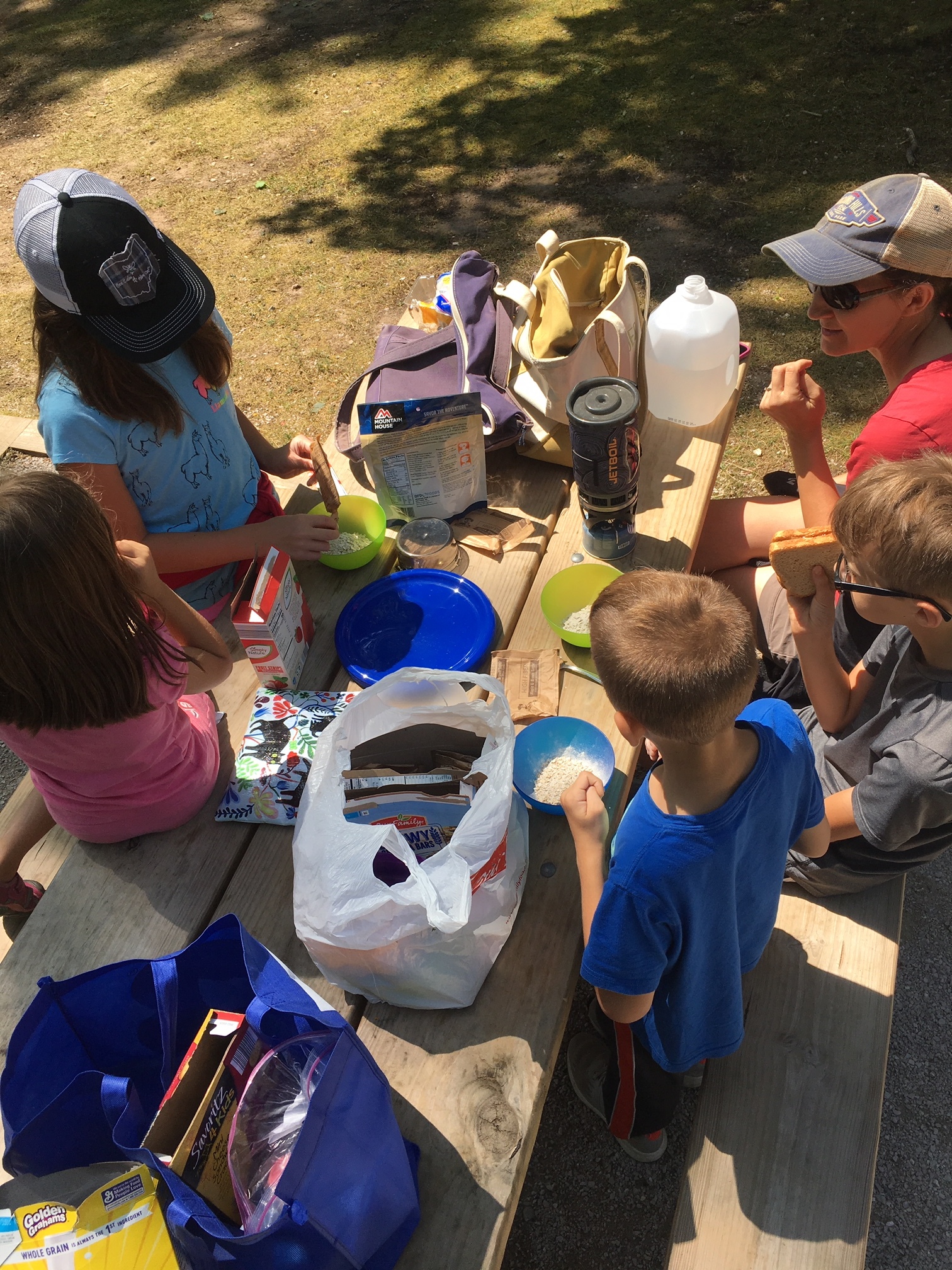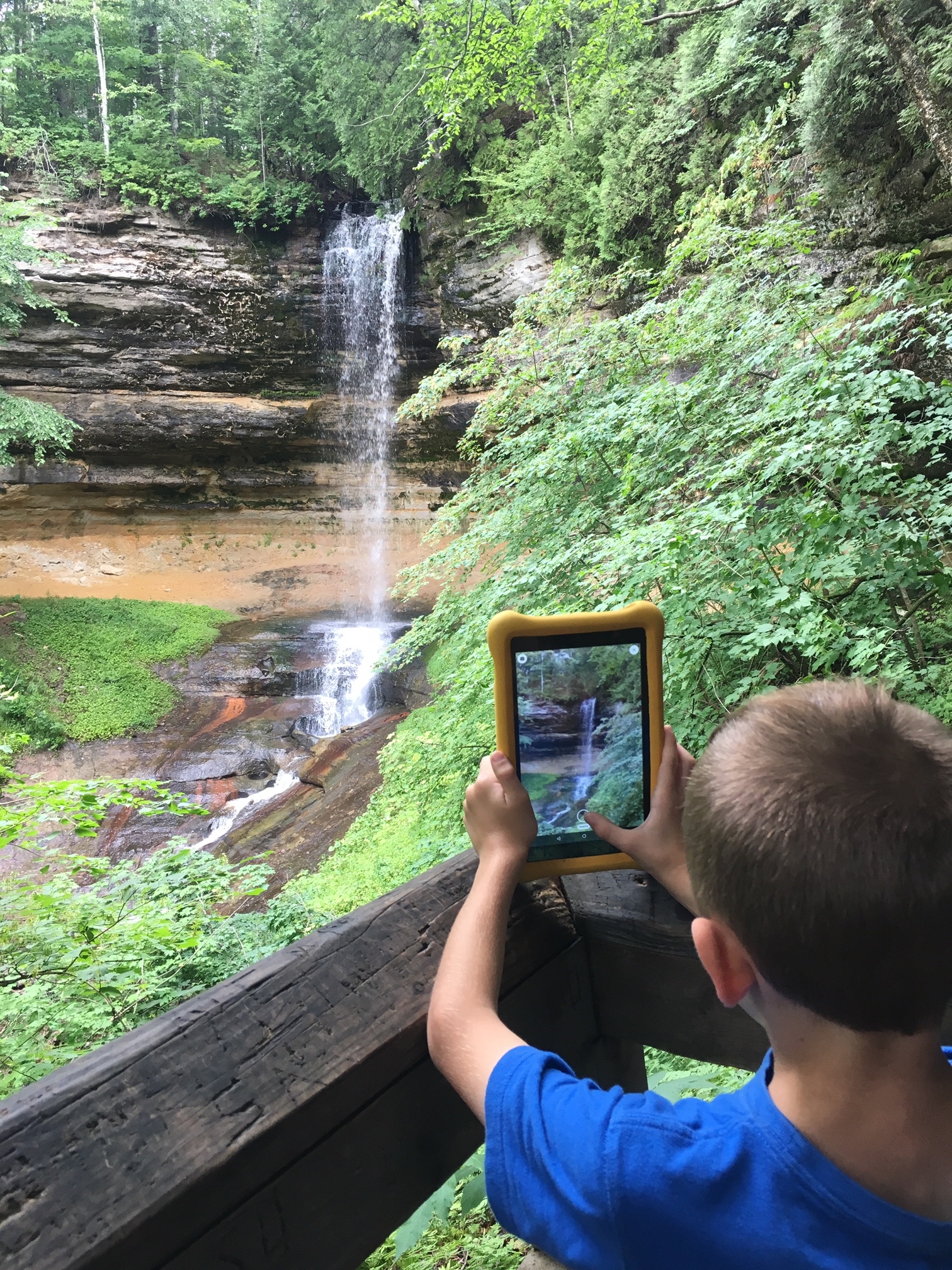Michigan-- The Yooper part
Jayne Barnes
-Posted by Isaac
Yes, it’s true we’re from O-HI-O. And it’s true, we don’t give a damn about the state of Michigan. But I’m not so sure we don’t give a damn about the whole state, as the song goes.
I think we kinda like the upper part.
Early August, 14 years ago, we made the Upper Peninsula our honeymoon.
And here we are, 14 years later standing in the same spot… looking slightly disheveled, slightly worse for the wear. Well, we’ve got a kid now.
Wait. One kid??
That’s right. Last week we took our big fat carbon footprint and planted it up north.
We planted it on the trails and in the forests.
In the lakes and on the beaches.
On the cliffs and up the dunes.
The U.P. holds so much fun.
And there’s so much to see. Starting with big bridges,
and big boats.
In Sault Ste Marie you can watch the giant Great Lakes freighters go through the locks. It’s exciting. I’m not kidding. Even for our kids, who usually don’t appreciate stuff like this, there was a sense that this was something special. We spent a good hour and a half just watching and pointing. Pictured above is the 740 ft Algoma Equinox. I think they said it was hauling about 40,000 tons of iron ore.
Going westward along the southern coast of Lake Superior, you get into the old old rocks.
No not that rock, Eden. I’m talking old. Close to 3 billion years old! The green striated metamorphic gneiss up there is the exposed part of the Canadian Craton. Basically the basement rock of North America.
The rock here in Ohio is young— layers of strata from the Paleozoic, wet behind the ears, full of fossils and sea sediment. It hides the basement. And it dates, if we’re lucky, to a measly half-billion years. You have to go north to commune with the good stuff. The old stuff.
In college I had the good fortune to visit the U.P. twice with a geology field studies group. We camped and hiked and scienced and played and romped all over the north woods.
We went to awesome places nobody goes.
And we ate every meal on the ground, or at best, on picnic tables.
22 years later I have the good fortune to be here with my children, to repeat and remember.
And boy do I love to share the gospel. To tell the old old story, if you will— geology. The ancient of days, the scripture of stone, the good book of rock.
They were extremely interested.
Above, Bridger captures the differential weathering of the beautiful Jacobsville Sandstone.
And below, Eden contemplates the bewildering unconformity of this half-billion year old sandstone lying directly on top of precambrian rock nearly four times its age!
Where did all that time go??
Don’t ask the tourists. They’re just here to see the waterfalls.
Let’s talk it over at the Farmers Market, my brilliant young protege.
Oh yes, they’ve got those in the U.P. also. This one in Munising had an outdoor concert to go right along with all that good local food.
The sun was out, Lake Superior was shining, the music was flowing and they had small patriotic beachballs scattered all over the place. Our little dancer decided that this was not the time or the place to talk geology.
And I don’t blame her.
I couldn’t keep up with the dancing, so I walked around sampling.
Like Eden, I quickly discovered that there’s more to life than rocks.




















































